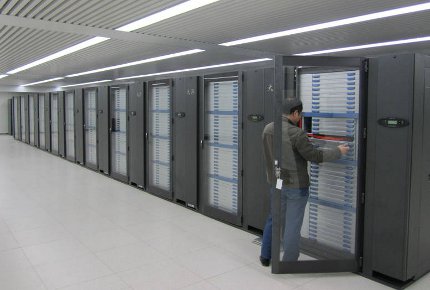NVIDIA wants us to believe that the future of high-performance computing lies in using GPUs, but now it actually has some proof to back up those claims. The company has announced that a new supercomputer built with its add-in boards has beaten the reigning champ to become the most powerful computer on the planet.
The Tianhe-1A is housed at the National Supercomputer Centre in Tianjin in North-eastern China. Built from the combination of 7,168 Tesla M2050 GPUs - the HPC version of the GTX 470 - and 14,336 unnamed multi-core CPUs, the system is able to reach 2.507 petaflops on the LINPACK benchmark. This beats the previous fastest supercomputer - the Cray XT5 'Jaguar' at Oak Ridge National Labs in the US - by around 40 per cent.

As well as providing a lot of raw compute power, the GPUs are significantly more efficient than an equivalent CPU-only system would be. NVIDIA estimates that more than 50,000 processors would be needed to build an equally powerful computer, which would require twice the floor space and three times as much power.
According to Guangming Liu, the man in charge of the facility housing the new supercomputer, "the performance and efficiency of Tianhe-1A was simply not possible without GPUs...the scientific research that is now possible with a system of this scale is almost without limits".
The announcement of this system - which is already fully operational - means that NVIDIA GPUs power two of the world's three fastest supercomputers. The other, Nebulae, is based in Shenzhen, China, and uses a collection of older-generation Tesla cards. The fastest AMD-powered system is housed at the same facility as the new Tianhe-1A, and makes use of around several thousand dual-GPU Radeon 4870 X2s to place seventh on the TOP500 ranking.













